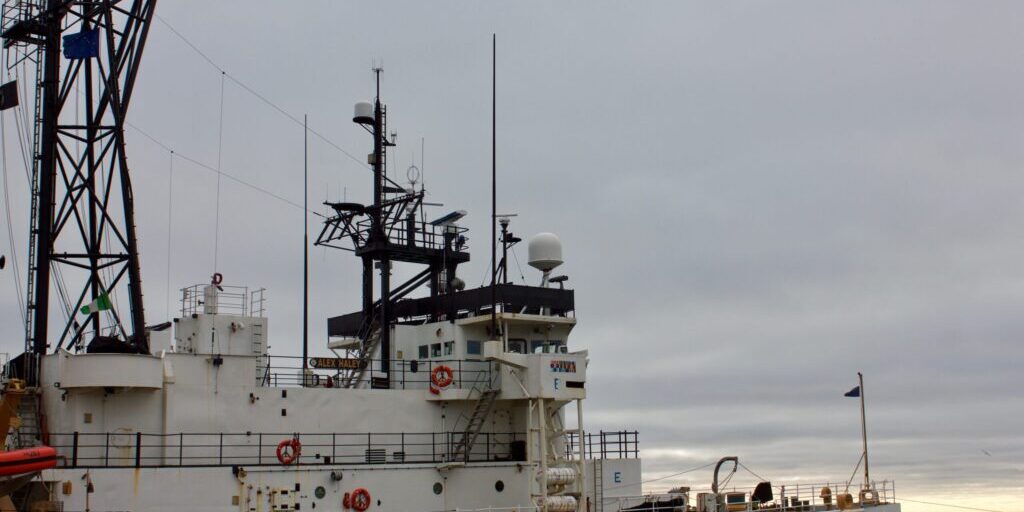A look at the topic of pollution response in the Bering Strait was the item of discussion during a recent installment of the Strait Science lecture series, sponsored by the University of Alaska Northwest Campus.
The United States and Russia have worked together in the past — at least until the war in Ukraine began — to address the issue.
Retired U.S. Coast Guard Commander Mark Everett was the guest speaker during the lecture the week of March 20, which focused on pollution response in the region. Since 2012, he has served as the incident management and preparedness adviser to the 17th District Coast Guard in Juneau.
Among his responsibilities is as the Coast Guard co-chair of the Russia-United States joint planning group, which is under the Russia-US Joint marine contingency plan for pollution preparedness and response in the Bering and Chukchi seas.
He is also the Coast Guard’s co-chair of the Alaska regional response team.
The war in Ukraine has put a damper on most of the bilateral activities between Russia and the US to address pollution issues, Everett said.
“We’ve had to cease our planning and activities with the Russian Federation,” Everett said. “Up until that time, we were meeting every couple of years, and we have a two-year joint work plan that we work from, we try to stay on track with drills and exercises. We were on a multi-year plan, which would have which would have come to fruition this summer with a full-scale joint Russia-US response plan in the Bering Strait.”
The US doesn’t want to just stop the work and will continue to honor America’s side of the two-year work plan agreement, Everett added.
An Alaska-based regional response team meets regularly to prepare for toxic spills, both at sea and inland, he said. If a spill does occur, an incident-specific team will be involved, depending on where it happens.
“If it’s in the coastal zone, the Coast Guard co-chairs the incident specific, if it’s in the inland zone, the EPA co-chairs the incident specific,” Everett said.
One of the scenarios the US plans and trains for is an oil spill off the shore of Seward Peninsula. The scenario calls for a collision of two vessels on the Russian side of the maritime boundary line, northwest of Big Diomede Island. In the scenario, a tanker collides with a cargo vessel and the tanker catches fire and burns for a couple days.
In that scenario, first responders begin by training in firefighting operations. Then, about two days into the simulated accident, there would be a spill of 5,000 metric tons of medium crude oil, which would hit the shores of Big Diomede and Little Diomede, and then continue across to US waters all the way over to the northern part of the Seward Peninsula.
Part of the what-if training involves real world equipment and continually making sure it works in the harsh environment of the Bering Strait region, Everett said.
“We want to demonstrate on-water mechanical oil spill recovery capabilities in the Bering Strait, and we’ll be doing that using Coast Guard assets,” Everett said.
Everett added that the Coast Guard and others involved in the exercises are not using any real-world dispersants, only fresh water.
Tom Vaden is the chair of the Nome Local Emergency Planning Committee and a member of the State Emergency Response Commission. He commented during the lecture that he believes the Coast Guard should establish a sector Nome.
“We’re right on the edge of this and I’m kind of pushing for this, because the you guys are pretty far away with sector Juneau and sector Anchorage,” Vaden said. “We’re building a port here, and as it warms up, we’re going to need some people here, especially as we’re starting to expand our port.”
Vaden also believes Russia is not the only threat in the Arctic.
“Not a lot of people think about this, but the Chinese are going like, we’re an Arctic nation. And everybody feels like they’re not an Arctic nation. But they’re building islands in the South China Sea. They have the technology, they can build an island up in the Arctic, and all of a sudden, they’re an Arctic nation. And that’s going to cause some significant problems,” Vaden said.
There is a separate bi-national agreement between US and Canada called the CAN-US Joint Marine Contingency Plan, which has two regions of responsibility — Dixon entrance and the Beaufort Sea — where the two nations come together, Everett said.
Image at top: US Coast Guard Cutter Alex Haley stopped in Nome near the end of its seasonal operations in the Arctic. Photo: KNOM.




